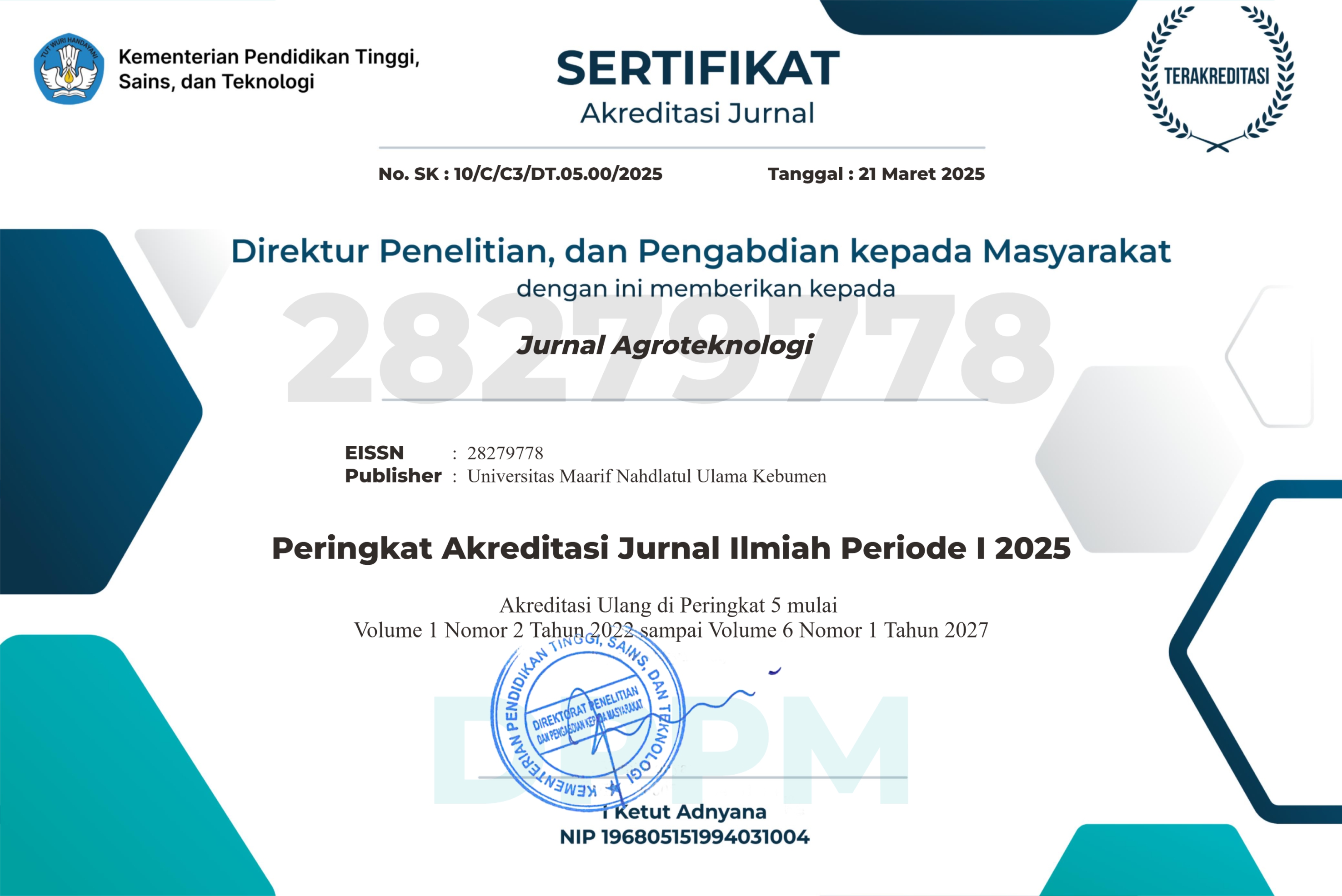ANALISIS BREAK EVEN POINT USAHA PENGRAJIN GULA MERAH DI DESA SEPARE KECAMATAN LOANO KABUPATEN PURWOREJO
DOI:
https://doi.org/10.53863/agronu.v1i01.173Keywords:
Kelayakan, Penderes Gula Kelapa, Gula Cetak, Gula Semut/Kristal, feasibility, coconut sugar grinder, molded sugar, ant/crystal sugarAbstract
Break Even Point (BEP) Analysis is a technical analysis that learn the relationship between fixed costs, variable costs, profits and activity volume. The concept of Break Even analysis can help brown sugar craftsmen in planning profits and controlling business activities so that losses can be minimized. Brown sugar craftsmen can find out the volume of production/sales that must be achieved and the selling price that must be set so that they break even or do not lose or make no profit. The purpose of this study was to find out (1) the amount of production costs, revenue, income and profits of brown sugar craftsmen in Separe Village, Loano. (2) the amount of Break Even Point (BEP) production and Break Even Point (BEP) The prices on brown sugar craftsmen business in Separe Village, Loano District. The research sample was taken by accidental sampling on 30 respondents. The results showed that (1) the amount of production costs incurred was Rp. 7,067,304.17/5 months, the revenue earned was Rp. 7,602,578,93/5 months, the income received was Rp. 6,196,628,93/5 months. as well as the business profit of brown sugar craftsmen in Separe Village, Loano District of Rp. 535,274.76/5 months (2) Break Even Point (BEP) production of brown sugar craftsmen in Separe Village, Loano District is 514.29 kg and Break Even Point (BEP) price is 12774.16 per kg
Keywords : brown sugar, cost, income, profit, Break Even Point
Downloads
Published
How to Cite
Issue
Section
License
Copyright (c) 2022 Nurlaila Fatmawati

This work is licensed under a Creative Commons Attribution-ShareAlike 4.0 International License.
Authors retain copyright and grant the journal right of first publication with the work simultaneously licensed under a Creative Commons Attribution-ShareAlike 4.0 International License that allows others to share the work with an acknowledgment of the work’s authorship and initial publication in this journal











